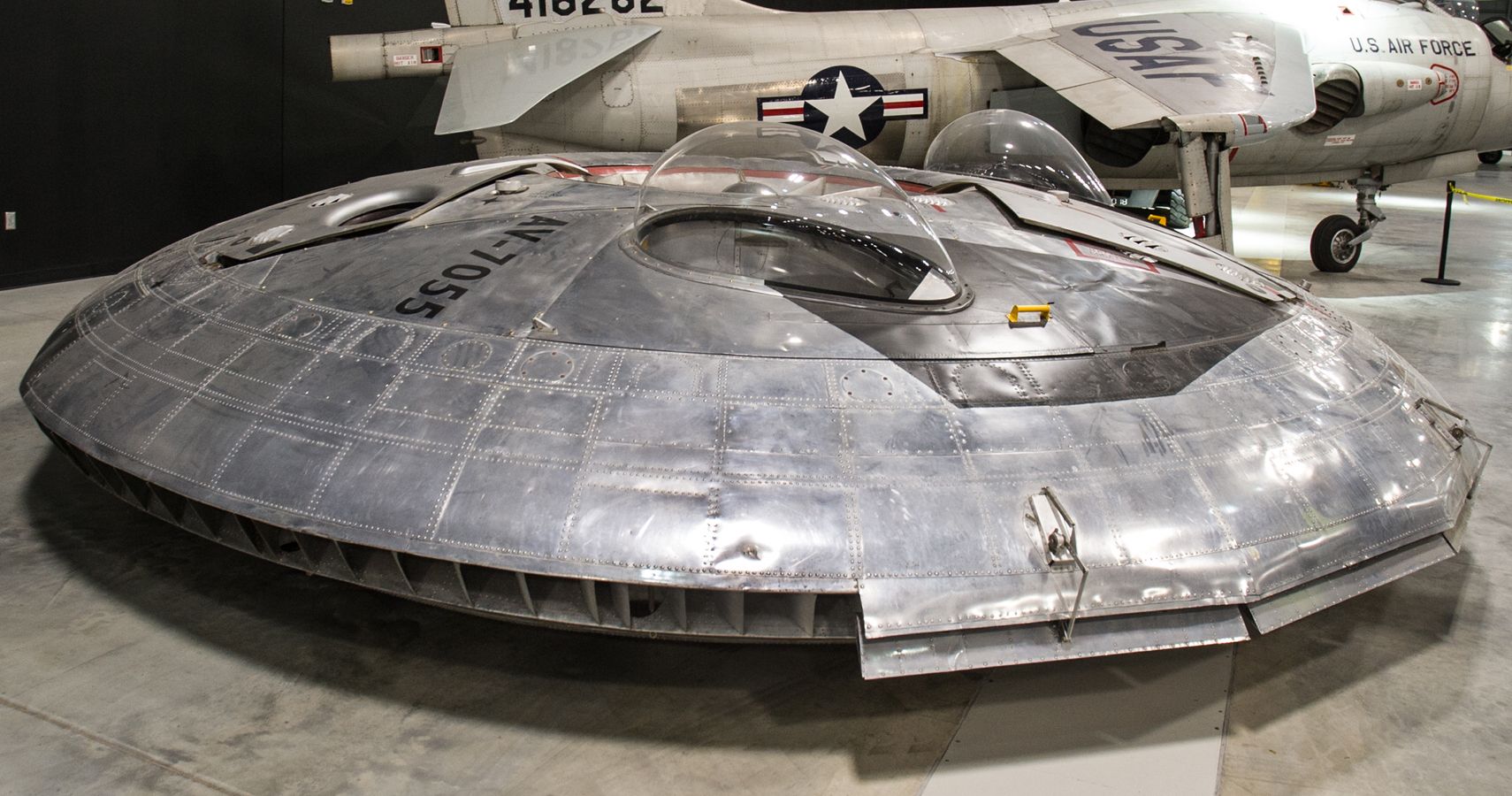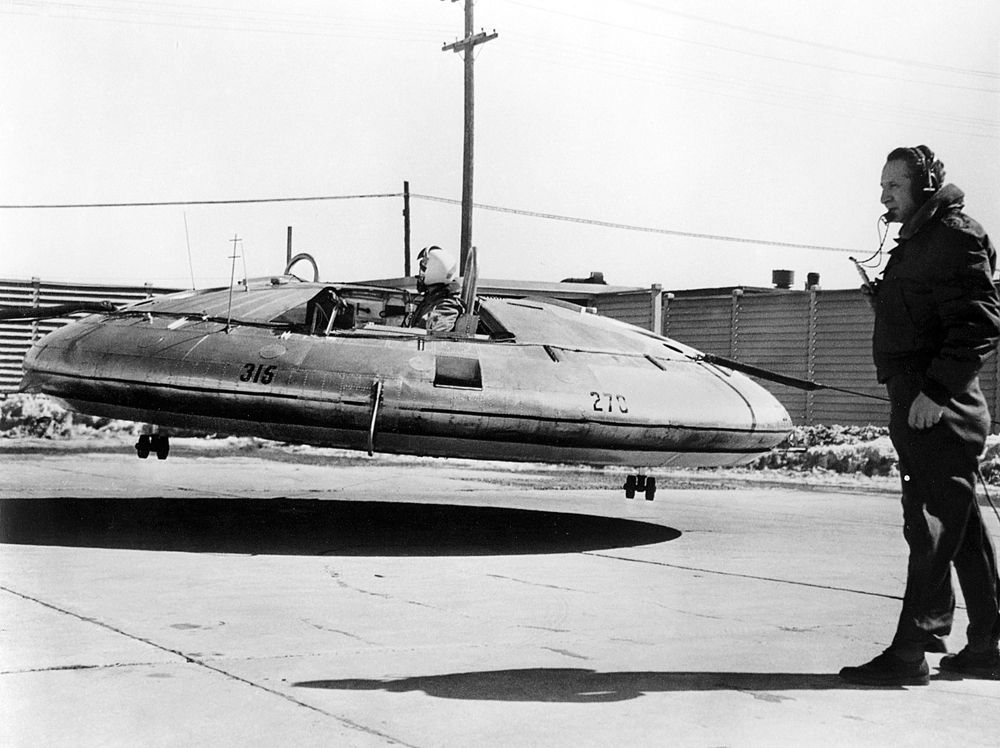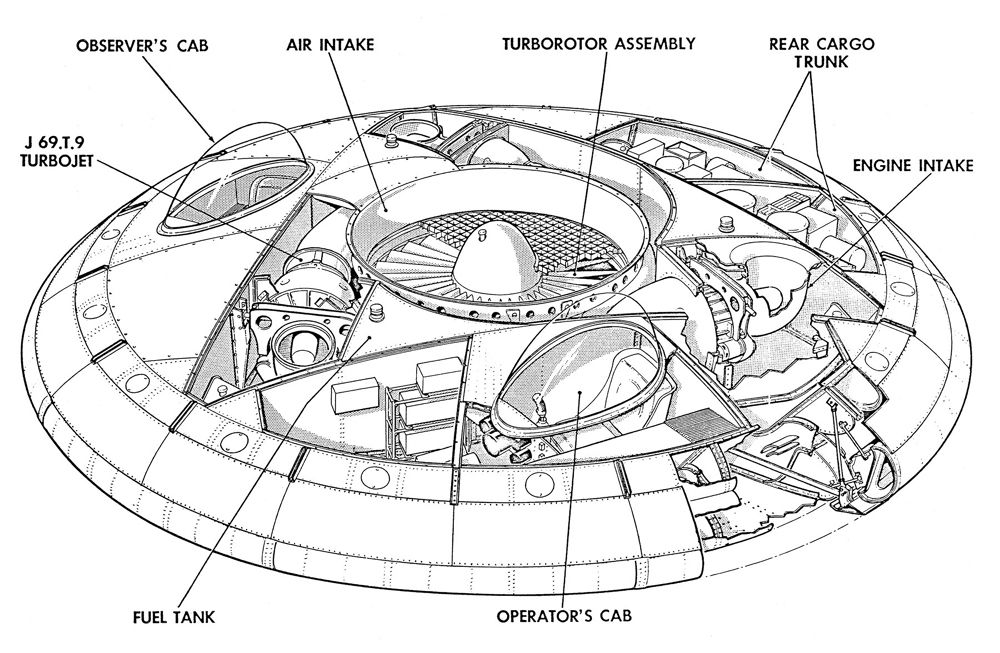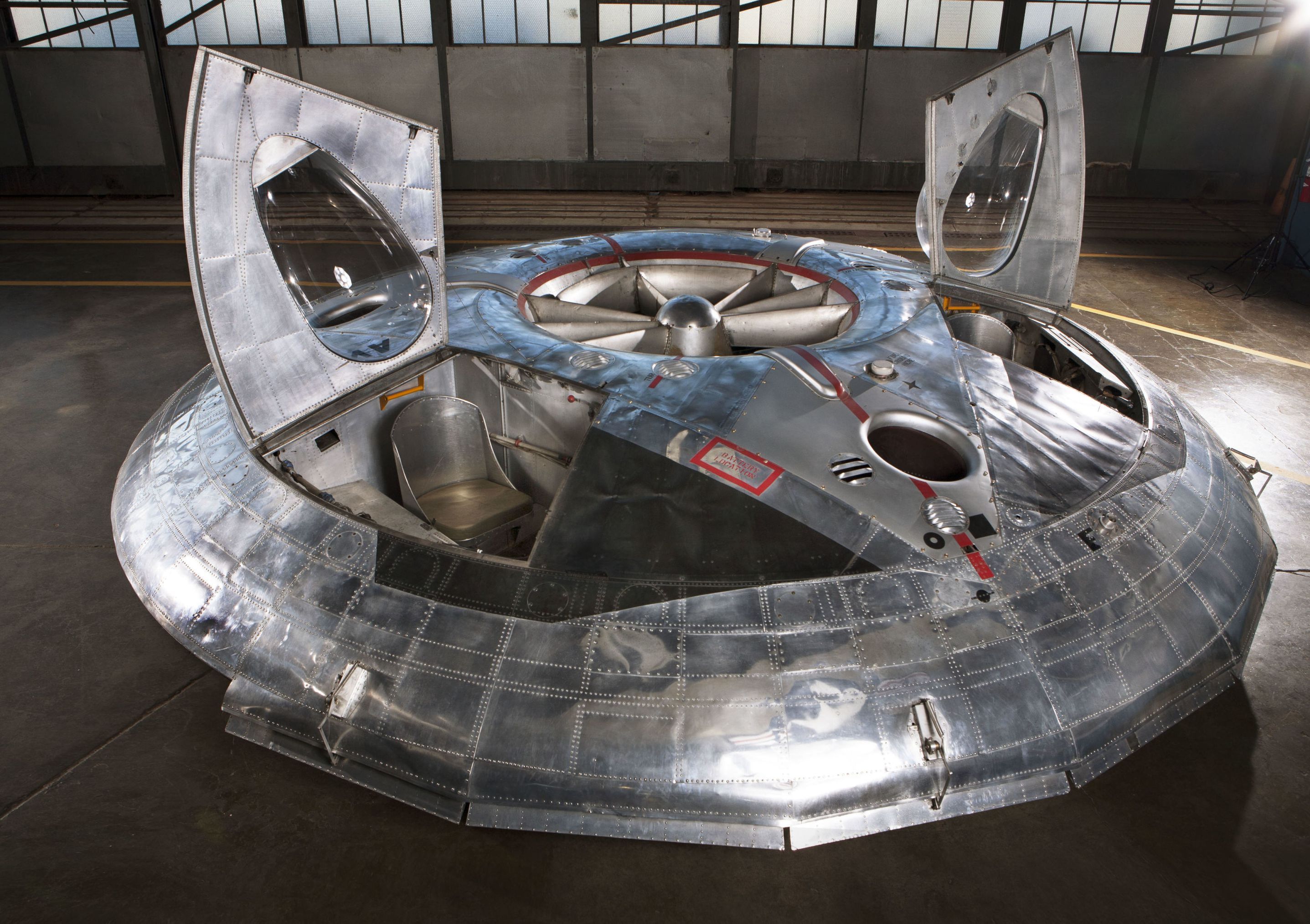For decades, the American military has tried to dispel the existence of aliens and flying saucers, from a deluge of sightings by civilians to the eerie goings-on at Area 51. But one instance that couldn't be denied was that the U.S. Air Force had a similar craft in its own fleet.
Introduced for testing in 1958, the contraption wasn't called a UFO, even though it looked like one. Instead, military brass referred to the craft as the VZ-9AV, which was technically built by aliens, namely a company called Avro Canada. But the vehicle, also dubbed the Avro Aerocar, wasn't meant for any type of extraterrestrial encounters. Here's what the military had in mind for this unusual-looking aircraft.
Military Looking At VTOL Solutions
Ever since the end of the Second World War, the Pentagon had been looking for aircraft that could execute vertical takeoff and landing (VTOL) procedures to improve military strategy and aerial delivery.
VTOL aircraft wouldn't need the cumbersome runways on aircraft carriers to embark on their missions, freeing up precious deck space for similar planes. Additionally, VTOL would also eliminate the need for land-based airstrips, which were particularly vulnerable to enemy bomb attacks.
The Avrocar seemed to be a solution to address all those problems. It was also considerably smaller than most fighter jets, meaning that more of them could be built, with each of them potentially providing as much firepower as their larger winged counterparts.
Avro Opted For Saucer Shape
Avro went through several design phases before deciding on its saucer appearance that could fit two pilots, each in separate cockpits. Such a shape was seen as more ideal for supersonic speed, using a complex scientific principle called the Coanda effect, in which moving air over the craft's surface would provide lift.
RELATED: U.S. Air Force Seeks Proposals For Military Flying Cars
An engine located smack dab in the middle of the saucer would provide additional life via air intake from the top, which would be expelled downward in all directions. At least, that's how everything looked on the drawing board.
Testing Didn't Go So Well
But when put into practice, the Aerocar prototype was a disaster. Declassified footage illustrated an endless series of hilarious and embarrassing results of the craft unable to get more than a couple of feet off the ground while erratically weaving back and forth. It was like watching films of comical attempts at manned flights during the dawn of the 20th century.
Avro discovered that even when the craft could fly a few feet higher, pilots would lose control of the vehicle. And despite alterations, the Avrocar wouldn't even come close to reaching Mach 1. Adding to the annoyance was the noise and the heat from the engine, barely a couple of feet behind the pilots.
By 1959, the Aerocar was scrapped. That same year, Avro Canada was also shut down by the Canadian government reportedly due to cost overruns. But the legacy of the saucer wasn't a total failure since it helped inspire the creation of subsequent VTOL aircraft like the British Harrier and the U.S.-built Osprey.
Sources: Aircraft Nerds, Global News, National Interest, National Museum of the United States Air Force




